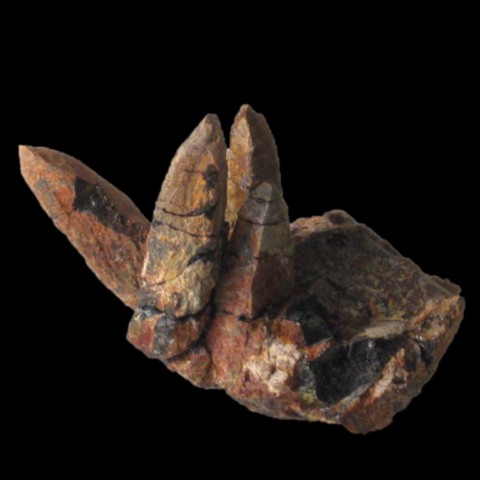FERGUSONITE
Class : Oxides and hydroxides
Subclass : Oxides
Crystal system : Tetragonal
Chemistry : YNbO4
Rarity : Uncommon
Fergusonite was initially a mineral in its own right, but its composition is so changeable that it has become a group of minerals subdivided, according to the dominant metal, into fergusonite-(Y), fergusonite-(Ce) or fergusonite-(Nd). The composition of this group is close to that of pyrochlore and samarskite-(Y). As in these minerals, the substitutions between rare earths elements (cerium, neodymium, lanthanum, etc...), uranium, thorium and yttrium are significant and variable and the mineral is generally metamict : on the other hand, titanium is absent or in small quantities. Fergusonite is an uncommon mineral in granitic pegmatites rich in biotite, more rarely in alkaline syenites associated with zircon. It was named in honor of Robert Ferguson, a Scottish politician and mineral collector who discovered the first sample in 1806. It occurs in masses, in grains, sometimes in tetragonal, prismatic to acicular, bipyramid crystals, reaching exceptionally 20 cm. Its brown or yellow color on the surface (metamictization halo), turns dark brown and black in the heart of the mineral. It is sometimes an ore of yttrium, rare earths, zirconium, niobium, tantalum or uranium.
Main photo : Fergusonite-(Y) from In den Dellen quarries, Mendig, Germany © Volker Betz
Fergusonite in the World
Twinning
No twin known for this mineral species.
Fakes and treatments
No fakes recorded for this mineral species.
Hardness : 5.5 to 6.5
Density : 5.6 to 5.8
Fracture : Sub-conchoidal
Streak : Brown to gray-green
TP : Opaque
RI : 2.05 à 2.19
Birefringence : 0
Optical character : None
Pleochroism : None
Fluorescence : None
Solubility : Hydrofluoric acid
Magnetism : Paramagnetic
Radioactivity : Low





